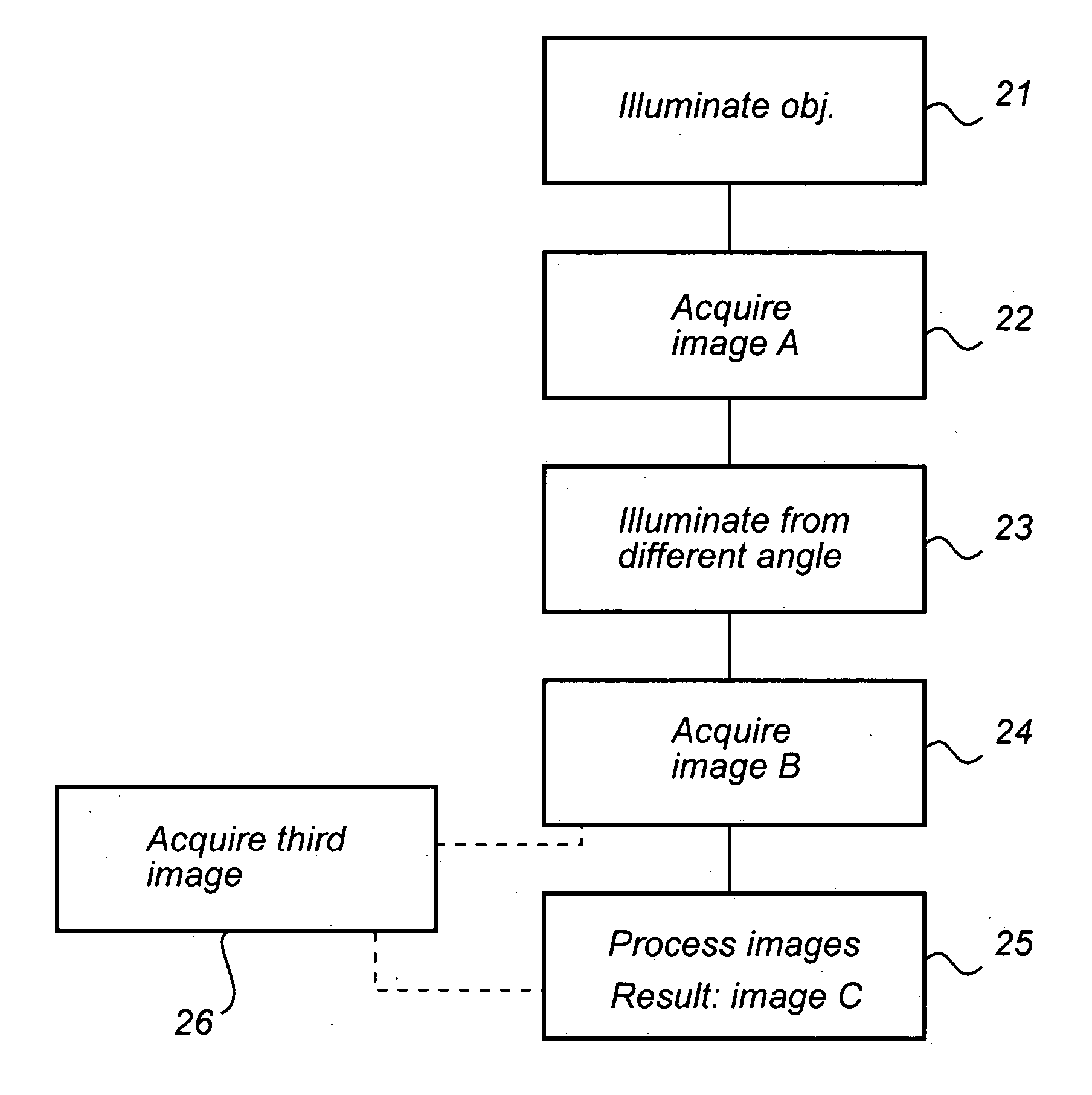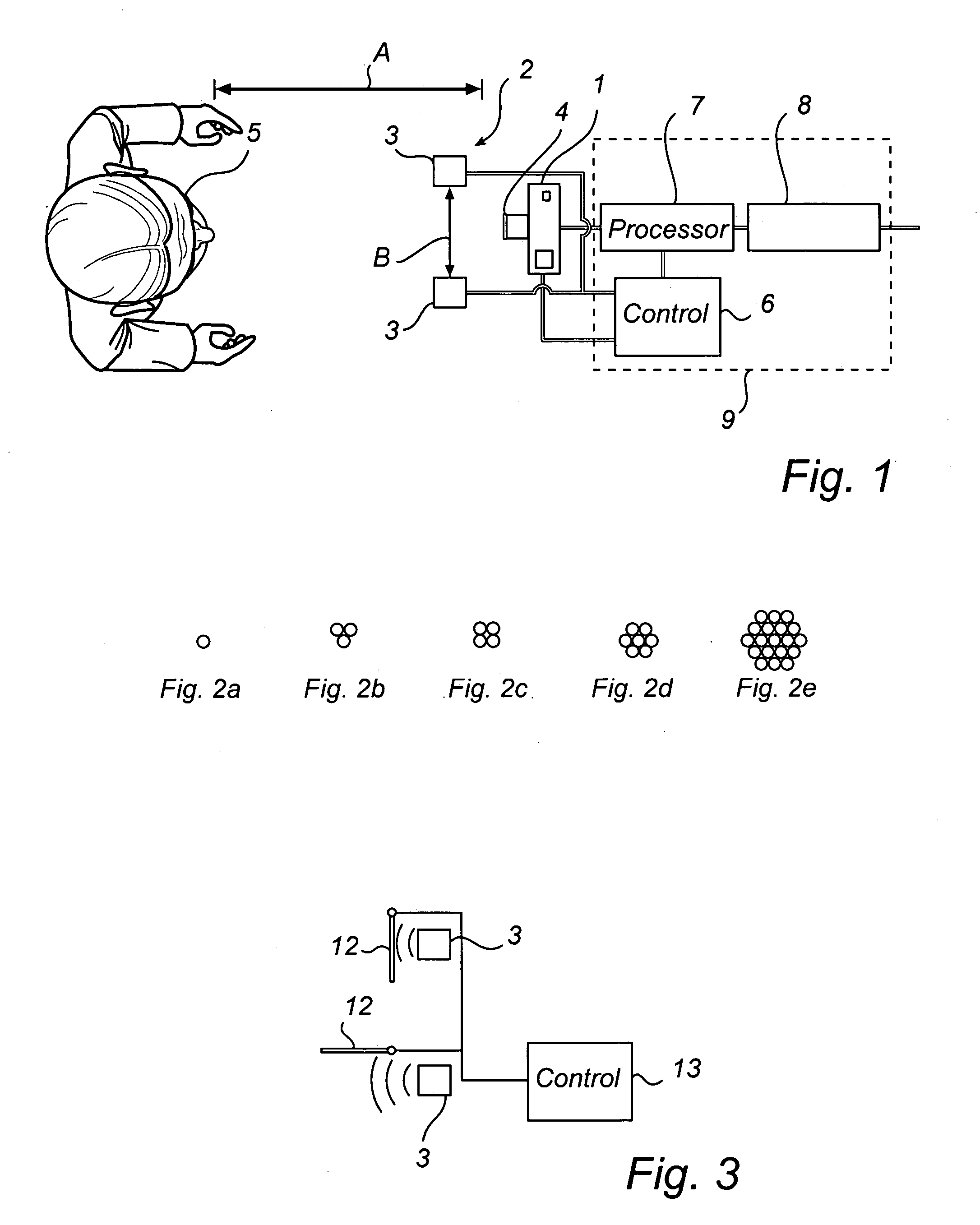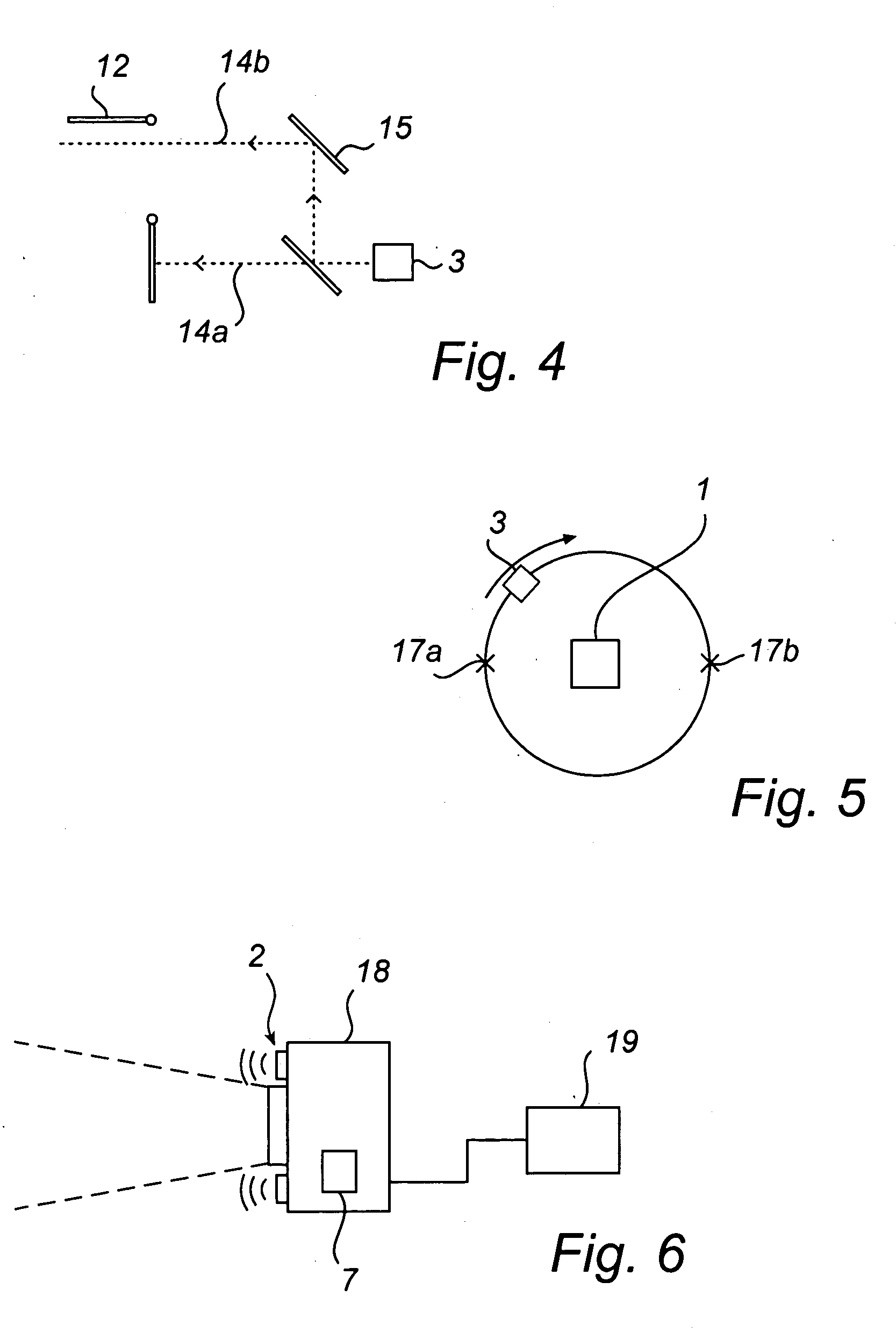Image capturing device with reflex reduction
a technology of image capturing and reflex reduction, which is applied in the field of image capturing devices with reflex reduction, can solve the problems of affecting the light, difficult computer processing of images, and constant change of images of objects
- Summary
- Abstract
- Description
- Claims
- Application Information
AI Technical Summary
Benefits of technology
Problems solved by technology
Method used
Image
Examples
Embodiment Construction
[0035] FIG. 1 illustrates an arrangement for capturing images of a face 5, with a device according to a first embodiment of the invention, especially adapted for detection of the bright eye effect of the eyes. In this case, a camera 1 with an electronic image sensor is used as image capturing device, and the wave emitter 2 comprises two separate wave sources 3.
[0036] The camera is preferably a conventional electronic image sensor camera, either of snapshot type or delivering a stream of consecutive images (i.e. a video camera). The images can be in a digital format, e.g. a bitmap format, or in analog form which then can be converted to a digital format, e.g. using a framegrabber circuit.
[0037] The electromagnetic waves emitted by the wave sources can be of different types, including IR radiation. In some cases it is preferred that the waves are within a relatively narrow wave length range outside the range of visible light, and that the camera is provided with a band pass filter 4 c...
PUM
 Login to View More
Login to View More Abstract
Description
Claims
Application Information
 Login to View More
Login to View More - R&D
- Intellectual Property
- Life Sciences
- Materials
- Tech Scout
- Unparalleled Data Quality
- Higher Quality Content
- 60% Fewer Hallucinations
Browse by: Latest US Patents, China's latest patents, Technical Efficacy Thesaurus, Application Domain, Technology Topic, Popular Technical Reports.
© 2025 PatSnap. All rights reserved.Legal|Privacy policy|Modern Slavery Act Transparency Statement|Sitemap|About US| Contact US: help@patsnap.com



